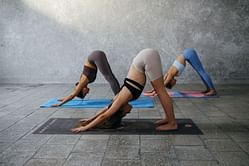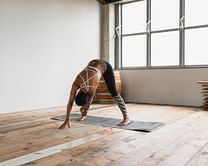Pilates is a type of physical exercise that emphasises the quality of movement over quantity. It is an excellent form of exercise for people of all fitness levels. It can be adapted to suit anyone, whether you are a beginner or a more experienced fitness enthusiast.
There are many benefits to pilates, including improved flexibility, better posture, and stronger muscles. If you’re looking to add pilates to your workout routine, there are a few things to keep in mind. First, be sure to warm up before starting your pilates routine. Second, focus on your breathing throughout the workout—deep, steady breaths will help you get the most out of your pilates session. Finally, be sure to listen to your body and stop if you feel any pain.
What are the benefits of doing pilates?
1. Improves posture
One of the most common benefits of pilates is that it can help improve your posture. Poor posture is often the result of weak muscles. Pilates can help strengthen the muscles in your back, neck, and shoulders, which will improve your posture.
2. Reduces stress
Pilates is a form of exercise that has been shown to have stress-reducing benefits. In a study published in the Journal of Strength and Conditioning Research, participants who took part in a pilates class for eight weeks had lower levels of the stress hormone cortisol than those who did not take part in the class.
Pilates can also help reduce stress by promoting relaxation and mind-body awareness. The slow, controlled movements in pilates calm the mind and body, and the focus on the breath promotes a sense of relaxation.
3. Increases flexibility
The stretching and strengthening exercises that are part of pilates lengthen your muscles and improve your range of motion. Pilates is a system of exercises that are often used to improve flexibility. A study published in the Journal of Bodywork and Movement Therapies found that pilates may increase flexibility and reduce pain in people with chronic lower back pain. Another research found that pilates may help improve flexibility and joint range of motion in healthy adults.
4. Improves balance
Pilates exercises help improve balance by teaching people how to control their bodies and move with precision. The exercises require focus and concentration, which helps improve balance and coordination. Pilatest also helps strengthen the core muscles, which improves balance and stability.
5. Strengthens core
Pilates can help strengthen your core by toning your abdominal muscles and improving your stability. This not only helps improve your posture and alignment but also protects your back and spine. In addition, pilates exercises challenge your core muscles in new and different ways, which helps keep them strong and toned.
6. Reduces back pain
Pilates strengthens the muscles in your back and improves your posture, which can help alleviate pain. These muscles support the spine and keep the body in alignment. Strong core muscles can reduce back pain by providing support for the spine and preventing the spine from becoming misaligned.
7. Improves mental health
Pilates has been shown to improve mental health in several ways. It can help improve mood, reduce stress, and improve cognitive function and memory. It can also improve balance and coordination.
What does pilates do to your body?
Pilates is a form of exercise that uses controlled movements to improve physical strength, flexibility, and posture. It can benefit the body in many ways, including improving muscle tone and joint mobility and aiding in weight loss and injury prevention.
What are the disadvantages of pilates?
Pilates is a type of exercise that uses controlled movements to strengthen the body. Although it is often heralded as a great workout for everyone, there are some disadvantages to doing pilates.
One disadvantage is that pilates can be repetitive and boring. Because the movements are often slow and controlled, they can become tedious after a while. This can lead to people quitting pilates before they see any real benefits.
Pilates can be particularly challenging for beginners. The slow and controlled movements can be difficult to master, and people can often feel frustrated when they are not able to do the exercises correctly.
How often should I do pilates to see results?
Most experts agree that doing pilates at least 2-3 times per week will help you see results.
Who should not do pilates?
Pilates is a low-impact form of exercise that can be beneficial for overall health and fitness. However, some people should not do pilates due to certain health conditions or injuries.
People with osteoporosis should not do pilates because it puts them at risk for fractures. People with herniated discs or other spine problems should also avoid pilates.
Those who have had recent surgery, are pregnant, or have heart problems should talk to their doctor before starting a pilates routine.
What exercises compliment pilates?
Pilates is often complemented by other forms of exercise, such as yoga, swimming, or even running. This is because pilates focuses on the quality of movement rather than the quantity. This makes it an ideal accompaniment to other forms of exercise that may be more focused on cardio or strength.

